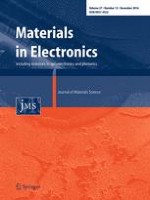25.05.2016
Hot wire chemical vapor deposited multiphase silicon carbide (SiC) thin films at various filament temperatures
Erschienen in: Journal of Materials Science: Materials in Electronics | Ausgabe 12/2016
EinloggenAktivieren Sie unsere intelligente Suche, um passende Fachinhalte oder Patente zu finden.
Wählen Sie Textabschnitte aus um mit Künstlicher Intelligenz passenden Patente zu finden. powered by
Markieren Sie Textabschnitte, um KI-gestützt weitere passende Inhalte zu finden. powered by
